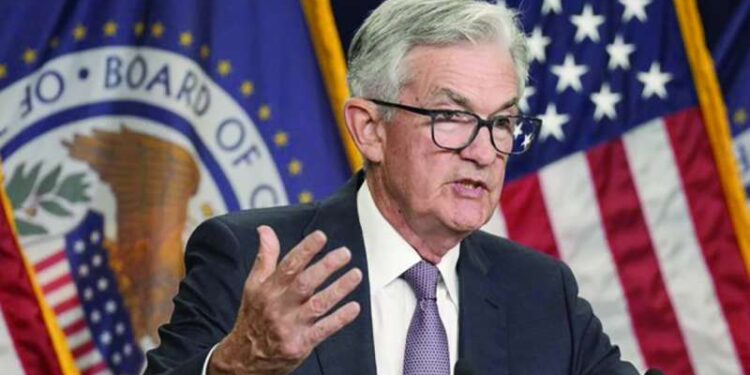High mortgage rates have virtually frozen the US housing market. While lower interest rates may be on the horizon, Americans may have to wait a while.
The average rate of a 30-year fixed-rate mortgage is more than 7 percent, up from about 3 percent in early 2022, as this has deterred potential first-time homebuyers from taking risks, and made current homeowners hesitant to sell their homes and buy… Others, as they prefer to stick to the very low rates they have already set.
Meanwhile, the lack of people selling their homes has contributed to a shortage of housing inventory and helped support prices, which may not come down anytime soon. While these factors act as a deterrent to potential buyers, interest rates may not stay high forever.
The Federal Reserve has raised interest rates to combat inflation, but many experts expect that it will move more cautiously – and perhaps lower interest rates – over the next year, in response to slowing inflation and the possibility of a weak US economy.
While lower interest rates will not directly cause mortgage rates to fall, the two tend to move in the same direction.
For this reason, potential homebuyers would be wise to keep an eye on when the Fed’s first rate cut might come, even though interest rates are unlikely to return to where they were a few years ago.
The Business Insider website collected about 10 expert forecasts regarding the date of the first reduction in interest rates, as follows:
February:
Last August, one of Morningstar’s senior American economists, Preston Caldwell, wrote in a memo that he expected the Fed to begin lowering interest rates next February.
He said: “The Federal Reserve will focus on monetary easing as inflation declines to its target of 2 percent, and the need to support economic growth becomes a source of great concern.”
March:
Earlier this month, a team led by UBS economist Arend Kaptein and strategist Bhanu Baweja wrote in a research note that they expect the Fed to cut interest rates starting next March.
“One of the key features of the UBS forecast is a very pronounced federal easing cycle, which is expected to unfold from March 2024 onwards,” they wrote.
They added that the Fed’s cuts will be "a response to the expected US recession in the second to third quarter of 2024 and the ongoing slowdown in both headline and core inflation.”
Not before April:
In August, David Einhorn, founder and president of Greenlight Capital hedge fund, wrote that he did not expect the Fed to cut interest rates until next year.
“We continue to believe that the market is over-expecting interest rate cuts, and we have extended this view until March 2024,” he said.
The month of May:
After the August inflation report was released, KPMG US chief economist Diane Swonk wrote in a note that the Fed may not be finished raising interest rates.
She stated that “(the Fed) needs to see quarters, not months, of cooler inflation essentially to lower interest rates.” And we’re not even close to that. Our expectations regarding the first interest rate cut in May 2024 remain valid.”
Separately, according to CME Group’s FedWatch tool, which calculates the probabilities of different moves for federal interest rates based on what traders do in the derivatives markets linked to those rates, there is a 19 percent chance of interest rates being cut in March. In May, the odds jumped to 82.3 percent.
Between April and June:
In a poll conducted by Reuters in September of the opinions of 97 economists, the consensus prediction was that the Federal Reserve would not lower interest rates until the period from April to June.
“Tight labor and housing markets represent an upside risk to inflation,” Andrew Hollenhorst, chief US economist at Citi, told Reuters.
This means that in the absence of a recession, policymakers will likely keep interest rates steady through 2024.
Second Quarter:
In a podcast episode of the “Goldman Sachs Stock Exchanges” program in September, David Merkel, chief American economist at Goldman Sachs, expected that the first interest rate cut by the Federal Reserve would be in the second quarter of 2024.
Regarding inflation, he said: “The best guess is that we will return to 2 percent.”
But we are by no means quite there, or even close enough. "It is too early to say that we have overcome this problem.”
Between May and the end of 2024:
In September, economists from some of the largest banks in North America said they expected the Fed to stop cutting interest rates until sometime between May and the end of next year.
Simona Mokota, chief economist at State Street Global Advisors, said: “Given the clear and expected progress on inflation, the majority of committee members believe that the (Fed) tightening cycle has reached its end.”
the other half
In a September note, Vanguard’s global economics and markets team wrote that it does not expect the Fed to begin cutting interest rates until the second half of 2024.
The team stated: “We believe that the impetus for easing will be either recession or low inflation while economic activity remains strong (soft landing).”
Later
Jeff Morton, portfolio manager at DWS Group, said in September that interest rate cuts were unlikely to occur until next year.
He added: “We have postponed our reduction expectations until later next year, at a rate of one reduction every quarter, unless any severe recession occurs” (Al-Arabiya.net).



















